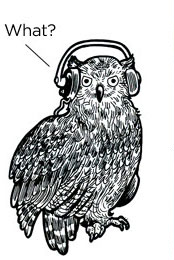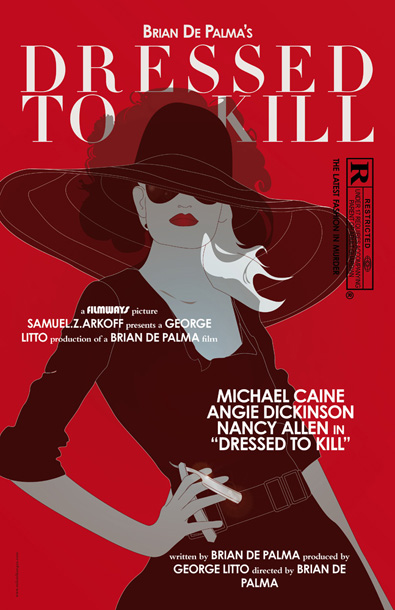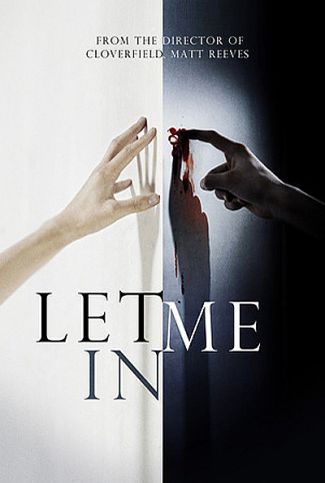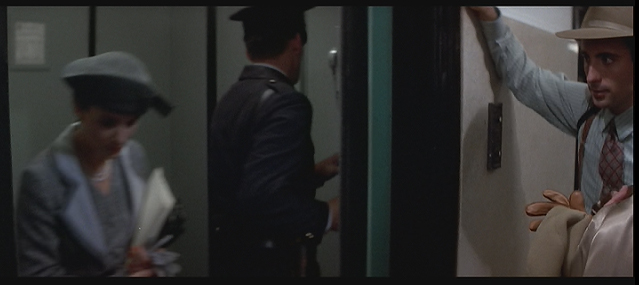 The Playlist's Drew Taylor speculates that a new clue from Criterion hints that a new DVD package of Brian De Palma's Blow Out may be on the way soon. A very welcome idea, as the film has been out of print on DVD for some time now.
The Playlist's Drew Taylor speculates that a new clue from Criterion hints that a new DVD package of Brian De Palma's Blow Out may be on the way soon. A very welcome idea, as the film has been out of print on DVD for some time now.
 Hello and welcome to the unofficial Brian De Palma website. Here is the latest news: |
|---|
E-mail
Geoffsongs@aol.com
-------------
Recent Headlines
a la Mod:
Listen to
Donaggio's full score
for Domino online
De Palma/Lehman
rapport at work
in Snakes
De Palma/Lehman
next novel is Terry
De Palma developing
Catch And Kill,
"a horror movie
based on real things
that have happened
in the news"
Supercut video
of De Palma's films
edited by Carl Rodrigue
Washington Post
review of Keesey book
-------------
Exclusive Passion
Interviews:
Brian De Palma
Karoline Herfurth
Leila Rozario
------------
------------
| « | November 2010 | » | ||||
| S | M | T | W | T | F | S |
| 1 | 2 | 3 | 4 | 5 | 6 | |
| 7 | 8 | 9 | 10 | 11 | 12 | 13 |
| 14 | 15 | 16 | 17 | 18 | 19 | 20 |
| 21 | 22 | 23 | 24 | 25 | 26 | 27 |
| 28 | 29 | 30 | ||||
De Palma interviewed
in Paris 2002
De Palma discusses
The Black Dahlia 2006

Enthusiasms...
Alfred Hitchcock
The Master Of Suspense
Sergio Leone
and the Infield
Fly Rule
The Filmmaker Who
Came In From The Cold
Jim Emerson on
Greetings & Hi, Mom!
Scarface: Make Way
For The Bad Guy
Deborah Shelton
Official Web Site
Welcome to the
Offices of Death Records
 The Playlist's Drew Taylor speculates that a new clue from Criterion hints that a new DVD package of Brian De Palma's Blow Out may be on the way soon. A very welcome idea, as the film has been out of print on DVD for some time now.
The Playlist's Drew Taylor speculates that a new clue from Criterion hints that a new DVD package of Brian De Palma's Blow Out may be on the way soon. A very welcome idea, as the film has been out of print on DVD for some time now.
Michael Gingold: Thanks to King and De Palma, countless people don't feel so bad about how their own proms went.
Bekah McKendry: This movie offered a shockingly real depiction of what it is like for girls to come of age in sexually repressive environments ... minus the telekinesis, which, if I had possessed it during my teen years, I would have used to mentally smack up bitches left and right.
Sam Zimmerman: I've always been oddly attracted and emotionally drawn to tales of damaged female protagonists, and that can probably be traced back to my extreme love of this film. (P.S. You should see its contemporary spiritual soul mate, May, starring Angela Bettis and directed by Lucky McKee. It's marvelous.)
Greatbong includes Carrie on his list of top 10 horror movies, opining, "What makes Carrie for me a cut above the more famous Exorcist is that while the latter’s shock value lies in its depiction of religious blasphemy (personally which left me cold), Carrie is unique in the way it brings out the horror of school life, the relentless cruelty shown by the cool kids to those socially awkward, a reflection of the essential sadism of human nature." And finally, Obsessed With Film's Dan Owen places Carrie at number 8 in his top 10 horror movies list, stating that "Brian De Palma’s seminal horror is a brilliant piece of work, probably because it takes its time getting you into the mindset of the bullied Carrie."
SPLIT SCREEN AS "CINEMATIC MEAT GRINDER"
One of the best of the recent essays about Carrie was posted by Bryce Wilson at Things That Don't Suck. Wilson writes, "One of the things that has always set De Palma aside from his New Wave contemporaries like Scorsese, Coppolla, Friedkin and even Altman, is here is a man with absolutely no love nor nostalgia for the Catholic Church. It’s not the last bastion of moral clarity; it’s a breeding ground for lunatics." Wilson adds that "never before or since has De Palma’s virtuosity blended so unobtrusively with his subject matter," and uses the split screen sequence as an example:
Take the infamous split screen finale. What has to be the best use of split screen in De Palma’s career (and thus by extrapolation, maybe the best use of the split screen ever). Here he turns it into a kind of cinematic meat grinder. A meat grinder that runs on for a subjective eternity before it finally ends. Perhaps the finest thing I can say about it, is that I always forget that it is inter cut with non split screen shots until I actually watch it.
Daniel Montgomery, apparently viewing the film for the first time, states, "At the outset I expected a revenge fantasy, but the film surprises by how sad it is. There is no vicarious thrill in watching Carrie take her revenge after being humiliated at the prom, because wee see that not all of her victims are guilty. Some were trying to help her. Two classmates seem to have been involved in the plot all along but are revealed to have been sincere, which compounds the tragedy. Their act of kindness was one act too late."
THE LOVED ONES DIRECTOR DIRECTLY INFLUENCED BY CARRIE
Clint Morris at Australia's What's Playing interviewed Sean Byrne, the writer/director of The Loved Ones, who says he was inspired by De Palma's film, among others (including Tobe Hooper's Texas Chainsaw Massacre). "The horror films from the 70’s and 80’s are just balls to the wall fun," Byrne told Morris, "and I just wanted to recreate that experience. I was especially inspired by Sam Raimi’s The Evil Dead and Brian De Palma’s Carrie, as well as Misery and Tarantino and Lynch." Discussing the Australian humor of his new horror film, Byrne told Morris, "I think it’s got its own distinctly wild Australian sense of humour," but then added that "its roots definitely lay with the classic American Cabin in the Woods and Prom movies."
 Slant critic Simon Abrams on Paranormal Activity 2, which was directed by Tod Williams:
Slant critic Simon Abrams on Paranormal Activity 2, which was directed by Tod Williams:Anyone watching Paranormal Activity 2 closely enough will see that the transitions between different cameras in the film isn't motivated by any internal logic but rather a narrative one. For instance, loud late night banging coming from outside a front door isn't explicitly shown, though there's a security camera present to document the event. That scene is cut in such a way that we can only see through that camera after the fact, confirming that we only get to see what the implied documentary filmmakers, as omniscient storytellers, want us to see in order to make their narrative spookier. In that sense, unlike its predecessor, Paranormal Activity 2 doesn't even look like a video report on unexplained events anymore: It's footage of a fake haunting transformed into a film-within-a-film.
 [The reimagined poster for Dressed To Kill pictured here was created by Mikael Kangas. More of his illustrations can be seen at Anna Goodson Management.]
[The reimagined poster for Dressed To Kill pictured here was created by Mikael Kangas. More of his illustrations can be seen at Anna Goodson Management.]DICKINSON ON '70s NUDITY: "THIS IS HOW WE'RE DOING IT NOW"
Meanwhile, Todd Gilchrist interviewed Angie Dickinson last week for the Wall Street Journal, on the eve of the Warner Archive on-demand DVD release of Roger Vadim's Pretty Maids All In A Row (the first batch of orders received copies autographed by Dickinson herself, and sold out quickly). Gilchrist asked Dickinson whether nudity was "a necessity for continuing to work" on films in the 1970s. Dickinson replied:
If I’d had a choice, I would have said, oh no, let’s do it under the covers and stay covered up. That would be my favorite way to do it. But I also was grown up enough to know, “this is how we’re doing it now.” On “Big Bad Mama,” I said, “do we have to have so much nudity?” and the director said yeah (laughs). So it’s hardly my favorite position, but I was an actor, and this is what movies were doing [then], so I did it.
The conversation turned to Dressed To Kill when Gilchrist asked Dickinson if she sees "a difference in the filmmakers who were working then and who are working now":
I haven’t worked on any of those big movies where they make you do the blue screen and all of that, so I don’t really know. The ones that I’ve done have still been the kind where once you’re on a set, you’re on a set; I can’t speak to the ones that have all of the blue screen, where you’re not really in Egypt, you’re in Burbank. The last big picture I made was “Dressed to Kill,” and it was a big budget made by a director who has great attention to detail –- Brian De Palma -– and that was very hard. Because he wanted everything exactly the way he wanted it, and rightly so -– which is hard to do sometimes. But in that, and of course that was 1980, he had to have, again, the nudity. That was just a given.
Gilchrist then asked Dickinson, "Are there any other films you made during your career that you feel like are unappreciated or deserve to be rediscovered by audiences today?"
You know, “Dressed to Kill” might be one, come to think of it. Because by those who have seen it, it’s quite admired, because it is scary as hell — but I don’t think it was actually the hit that it would be today. But that comes to mind, and I did a television series called “Pearl,” and that was a great series about Pearl Harbor on the outbreak of WWII with Robert Wagner, Dennis Weaver, Leslie Ann Warren and myself. I always loved myself in that, and that’s always been, let’s say, shoved under the rug. But “Point Blank” is already in DVD, and that one is my favorite.
THE CASTRO REDISCOVERS PSYCHO & DRESSED TO KILL TOGETHER ON THE BIG SCREEN
Earlier this month, San Francisco's Castro Theatre featured a double bill of Alfred Hitchcock's Psycho and De Palma's Dressed To Kill, the former having been released 50 years ago, and the latter having been released 30 years ago. Kelly M. Hudson attended, and wrote on his blog that "there were a couple of sequences that made the audience I was watching it with erupt into enthusiastic applause and those were the attack in the subway and the finale in the doctor's office and the final dream sequence. And those people were right: they were brilliant." Dan at Dan's Movie Blog was also at the screening, and similarly stated, "I will say that a few scenes where Blake is menaced by the woman ratchets up the suspense to unusually tense levels. I'm specifically thinking about the scene in Michael Caine's office and in the bathroom at the end." Dan also recalls the "teenage boys in his clique" in the early 1980s talking "about the infamous opening scene featuring Angie Dickinson taking a shower." Dan notes that Dickinson's body double in the opening shower scene was Victoria Lynn Johnson "(August 1976 Penthouse Pet of the Month)."
Marsh used the quote to help illustrate his point about how the Green Day musical "trusts the music"-- meaning that the original Green Day album told the story just fine on its own, and the new show keeps the volume loud and trusts the music's rock roots by slurring the lyrics like a rock'n'roll show should (according to Marsh).
 The other day, the New York Times' Patrick Healy posted an article that served to officially announce that the revamped stage version of Carrie has been acquired by the MCC Theater, which plans to open the show Off Broadway as "a major production at the Lucille Lortel Theater during the 2011-12 season." Healy interviewed the show's director, Stafford Arima, who said he was actually in attendance for the orginal preview of Carrie on Broadway on April 30, 1988. "I had never seen a crowd go wild like the ‘Carrie’ crowd did, the infectious and almost hypnotic quality to some of the songs, the absolute roar from the audience at the end as Carrie dies,” Arima told Healy. “Personally, too, as a theater geek who had been bad at gym, I related very much to the archetype of the misfit. How many of us can remember being made fun of in high school because we were too smart, too shy, too awkward?” Arima told Healy that about half of the songs in the new show will be different than the original show, which was a notorious flop. "Among the songs already jettisoned," states Healy, "is the notorious Act II opener, 'Out for Blood,' in which high school mean girls and boys work themselves into a state of murderous rapture as they seek pigs’ blood for a cruel prom-night prank against Carrie, a character best known from Sissy Spacek’s portrayal in the 1976 film adaptation."
The other day, the New York Times' Patrick Healy posted an article that served to officially announce that the revamped stage version of Carrie has been acquired by the MCC Theater, which plans to open the show Off Broadway as "a major production at the Lucille Lortel Theater during the 2011-12 season." Healy interviewed the show's director, Stafford Arima, who said he was actually in attendance for the orginal preview of Carrie on Broadway on April 30, 1988. "I had never seen a crowd go wild like the ‘Carrie’ crowd did, the infectious and almost hypnotic quality to some of the songs, the absolute roar from the audience at the end as Carrie dies,” Arima told Healy. “Personally, too, as a theater geek who had been bad at gym, I related very much to the archetype of the misfit. How many of us can remember being made fun of in high school because we were too smart, too shy, too awkward?” Arima told Healy that about half of the songs in the new show will be different than the original show, which was a notorious flop. "Among the songs already jettisoned," states Healy, "is the notorious Act II opener, 'Out for Blood,' in which high school mean girls and boys work themselves into a state of murderous rapture as they seek pigs’ blood for a cruel prom-night prank against Carrie, a character best known from Sissy Spacek’s portrayal in the 1976 film adaptation."
 Armond White is not impressed with Matt Reeves' Let Me In, which opened this weekend at U.S. theaters. "This perverted fairy tale about Owen’s guardian vampire degrades the vampire genre simply to exploit adolescent sappiness," White states in his review at the New York Press. White goes on to contrast Reeves' film with "the all-time great adolescent horror movie," Brian De Palma's Carrie. Here are the two concluding paragraphs of White's review:
Armond White is not impressed with Matt Reeves' Let Me In, which opened this weekend at U.S. theaters. "This perverted fairy tale about Owen’s guardian vampire degrades the vampire genre simply to exploit adolescent sappiness," White states in his review at the New York Press. White goes on to contrast Reeves' film with "the all-time great adolescent horror movie," Brian De Palma's Carrie. Here are the two concluding paragraphs of White's review:True to millennial faithlessness, Let Me In rejects Carrie’s complexity, emphasizing both Abby and Owen’s misery. Young scholar Jesse Tucker wrote a brilliant essay describing De Palma’s final twist (where Carrie’s hand grasps her schoolmate’s) as a forgiving gesture toward commiseration. Reeves flips that beautiful motivation in the scene where Owen ignores a reach for help from one of Abby’s victims. It’s an obscene devolution of the genre. Children should not be exposed to this lurid display of helplessness and pessimism—and adult viewers should be wary of the nihilistic indulgence.
JESSE TUCKER ON CARRIE
In November of 2007, Jesse Tucker wrote a review of Carrie in which he presented the intriguing metaphysical interpretation (mentioned by White above) of the final scene in De Palma's film:
A dreamlike sheen hangs over the ending. Sue, the only survivor, sleeps, while in her subconscious she lays flowers on the charcoal pit where Carrie's house used to be. Everyone knows the ending, with Carrie's hand reaching to grab Sue's from another world. It's a shock many people experience come October. But De Palma doesn't use it merely to send us away from the film with a jolt. The gesture is a final, failed attempt to connect. Throughout the film we see the secret pain of abuse, the shock in Chris' face when her boyfriend slaps her, Carrie flinging her advancing mother across the room. Briefly, we see the happy domesticity of Sue's home life. Carrie, beyond the grave, is trying to forge a bond between these girls who exists on the opposite spectrum of life. It fails as Sue wakes up screaming. The other girl is regulated back into the darkness.
(Thanks to John!)

Brian is a great director. Nobody can interpret things visually like he does: telling a story through a lens. Take the scene in The Untouchables where Charles Martin Smith is shot in the elevator. Look at that steadycam shot; he's not just moving the camera to show you that we can go longer because we have the steadycam. Francis used to tell me, "Marty, we can start a shot and go up to the Empire State Building and come back down. Anybody can do it. You have to know how to move a camera a little bit, that's all." A lot of people use the steadycam and don't know what they're doing. What Brian does with it is tell the story, progressing the story within the shot. That's just one example. Then in Carlito's Way there's a scene entering a night-club and the camera tracks up. It's extraordinary, his visual interpretation. He deals with stories that enable him to do that sort of thing. So when you get a real De Palma picture like Raising Cain or Body Double, you're getting something really unique. He's provocative. He goes, "I'm going to do this again. Hitchcock did it - so what? Who cares? I'm doing it this way." Brian knows. We always talk about that together.